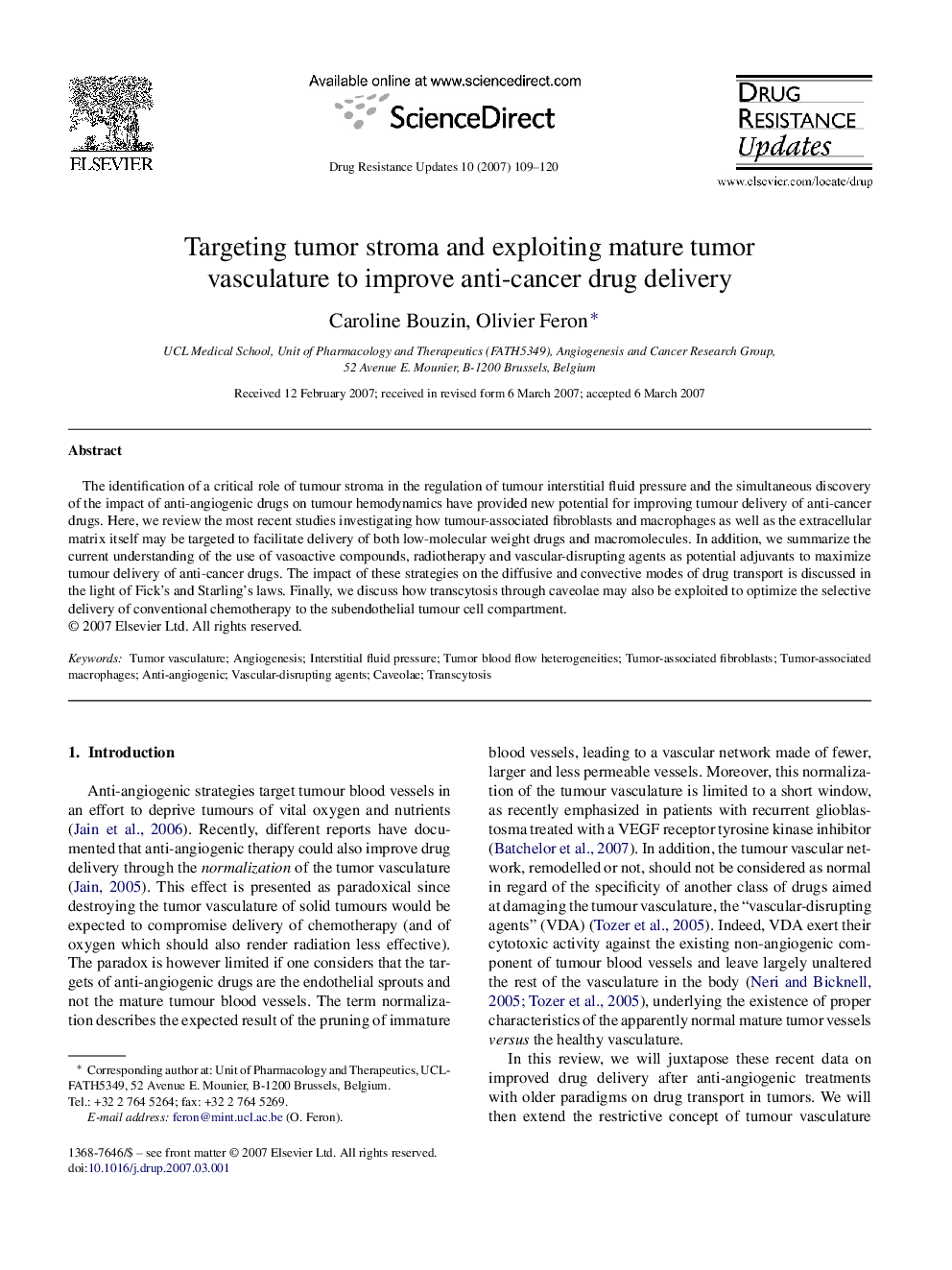| Article ID | Journal | Published Year | Pages | File Type |
|---|---|---|---|---|
| 2120548 | Drug Resistance Updates | 2007 | 12 Pages |
The identification of a critical role of tumour stroma in the regulation of tumour interstitial fluid pressure and the simultaneous discovery of the impact of anti-angiogenic drugs on tumour hemodynamics have provided new potential for improving tumour delivery of anti-cancer drugs. Here, we review the most recent studies investigating how tumour-associated fibroblasts and macrophages as well as the extracellular matrix itself may be targeted to facilitate delivery of both low-molecular weight drugs and macromolecules. In addition, we summarize the current understanding of the use of vasoactive compounds, radiotherapy and vascular-disrupting agents as potential adjuvants to maximize tumour delivery of anti-cancer drugs. The impact of these strategies on the diffusive and convective modes of drug transport is discussed in the light of Fick's and Starling's laws. Finally, we discuss how transcytosis through caveolae may also be exploited to optimize the selective delivery of conventional chemotherapy to the subendothelial tumour cell compartment.
